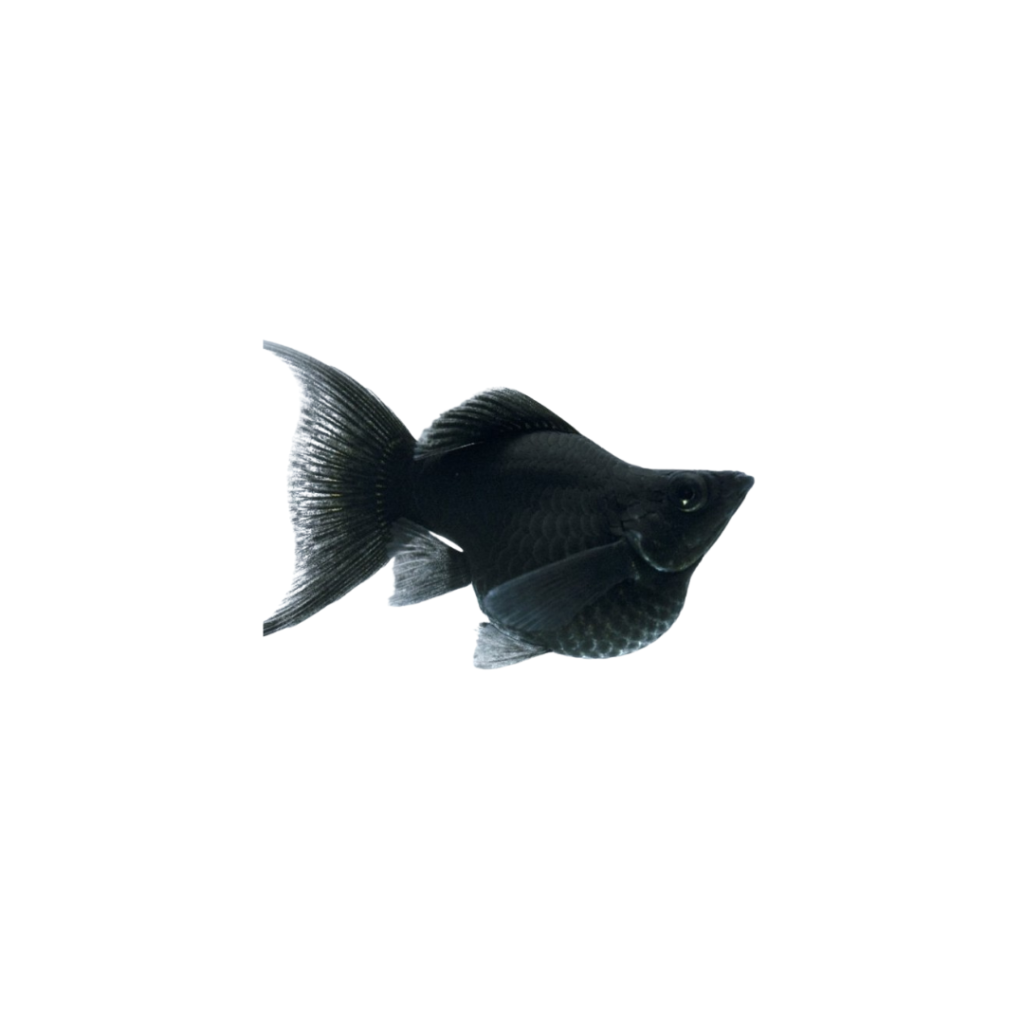Guppy PRTD
Poecilia reticulata

Description
The Guppy PRTD (Platinum Red Tail Dragon) is a highly prized variety of guppy known for its striking appearance. These guppies are characterized by their unique coloration, which includes a shimmering platinum or silvery body with a vibrant red tail and sometimes orange or gold highlights. The tail typically has a broad, solid red coloration, and the body has a metallic sheen that makes the fish stand out in any aquarium.
Habitat Origin
Native to the freshwater rivers, lakes, and streams of Central and South America, particularly in regions of Venezuela, Trinidad, and Guyana. Guppies are found in calm, slow-moving waters with abundant vegetation. Over time, the PRTD variety has been selectively bred for its unique coloration and pattern.
Aquarium
Ideal Number in Aquarium: At least 4-5 individuals to display natural schooling behavior. Keeping them in groups allows them to feel secure and display their natural behaviors.
Favorite Food

Guppy PRTDs are omnivores and will accept a wide variety of foods. They can be fed high-quality flake food, micro pellets, and live or frozen foods such as brine shrimp, daphnia, bloodworms, and grindal worms. They also enjoy vegetable-based foods like spirulina, blanched zucchini, and lettuce. A balanced diet is important for maintaining their health and vibrant coloration.
Behavior:
The Guppy PRTD is a peaceful, active, and social species. They are known for their active swimming and can often be seen darting about the middle and upper levels of the tank. Guppies are also very social, so it’s best to keep them in groups where they can interact with each other and feel secure. While they are generally peaceful, males may occasionally show territorial behavior, especially during breeding periods when they compete for the attention of females.
Special Care:
Guppy PRTDs are hardy fish that adapt well to a variety of water conditions, but they do best in stable, clean water with a moderate level of hardness. Regular water changes, good filtration, and a well-maintained tank are necessary to keep them healthy. These guppies are also livebearers, meaning they will breed in your aquarium if males and females are kept together. If breeding is not desired, it’s best to keep only males or separate them from females.
Compatibility with Other Fish:
Guppy PRTDs are compatible with a variety of peaceful species. They can be kept with other guppy varieties, tetras, rasboras, small catfish like Corydoras, and gouramis. It’s best to avoid keeping them with larger, more aggressive fish that may bully or eat them, such as bettas, cichlids, or goldfish.
Breeding Tank Setup
Setting up a separate breeding tank for Guppy PRTD is highly recommended, even if not absolutely necessary. A dedicated tank allows for better control over water parameters and helps protect the fry from being eaten by adult fish. A 20–40 liter (5–10 gallon) tank is ideal, offering enough space for the breeding pair and fry. Guppies thrive in water with a pH of 7.0–8.0, temperatures between 24–28°C, and hardness levels of 6–12 dGH. A sponge filter or low-flow internal filter is ideal, providing clean, well-oxygenated water without strong currents. Use fine gravel or sand as substrate and add live plants like Java moss or floating vegetation to give fry places to hide.
Conditioning for Breeding
To prepare Guppy PRTD for breeding, offer a protein-rich, balanced diet. Live or frozen foods such as brine shrimp, daphnia, and bloodworms are excellent for conditioning, alongside quality flakes or pellets. This promotes egg development in females and encourages mating behavior in males. Maintain clean water by performing 20–30% weekly water changes. Slightly raising the temperature to around 28°C can help trigger spawning behavior and improve the success of mating attempts.
Spawning Process
Once conditioned and in optimal water conditions, males will begin courting females with bright displays and chasing behaviors. Guppy PRTD are livebearers—meaning fertilization happens internally, and the female will carry the fertilized eggs for 4–6 weeks. During this gestation, the female’s belly will swell noticeably. She may give birth to anywhere from 20 to 100 fry per brood. While it is not essential to move the female after birth, doing so can help prevent the fry from being eaten and improve survival rates in tanks with adult fish.
Fry Care
Fry are born fully developed and free-swimming immediately after birth. Start feeding them with infusoria, liquid fry food, or finely crushed flakes. After about a week, introduce newly hatched brine shrimp or crushed pellets. Perform small water changes (10–15% every 2–3 days) to maintain high water quality, and ensure the temperature remains stable between 24–28°C. A sponge filter is essential, providing filtration without pulling in the fragile fry. Keep the tank calm, well-planted, and low in current to reduce stress and create a safe growing environment.
Maturity, Sexing, and Stress Prevention
Guppy PRTD reach breeding maturity at around 3–4 months. Males are more colorful and slender, and possess a gonopodium—a modified anal fin used in fertilization. Females are larger, rounder (especially when gravid), and generally less colorful. To reduce stress and improve breeding outcomes, avoid overcrowding and maintain stable water parameters. Remove aggressive or fast-swimming tankmates, and provide a calm, secure environment where breeding pairs can interact naturally and the fry can grow without disturbance.
